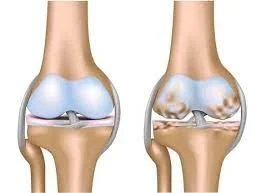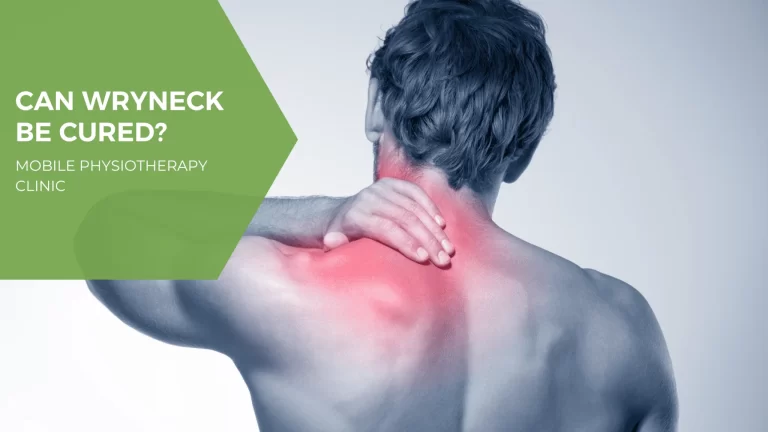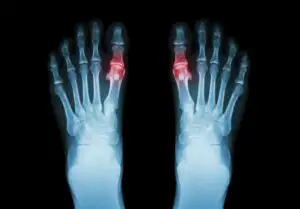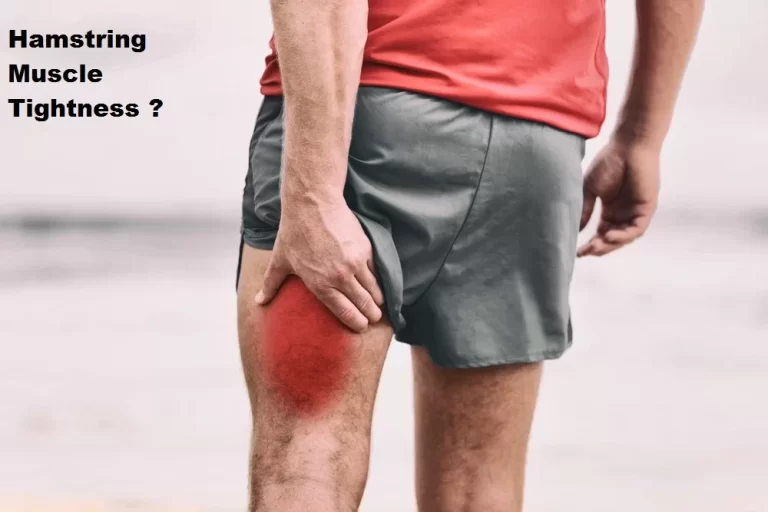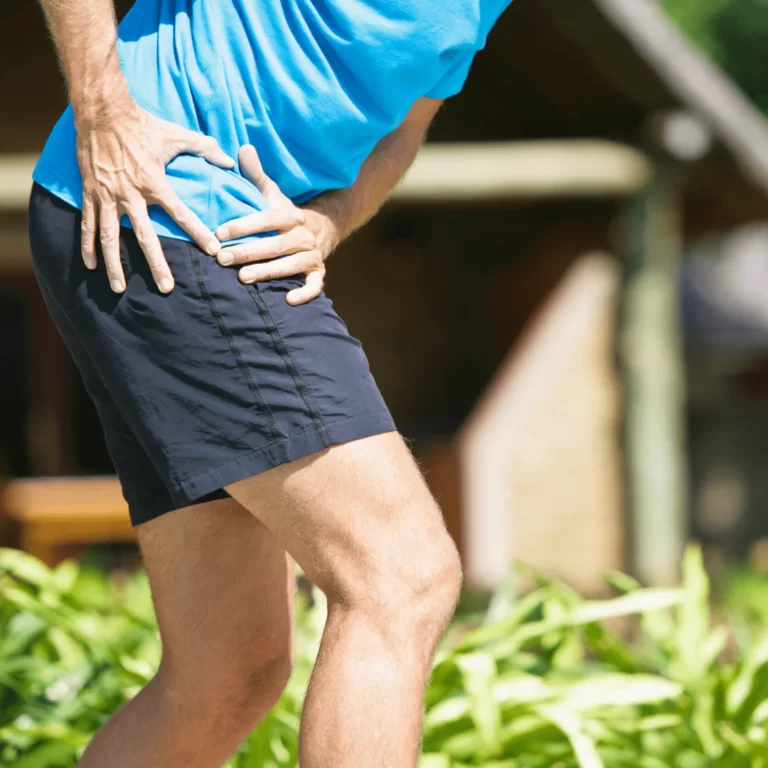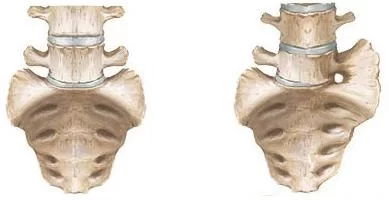Bone Spur On The Knee
Introduction
Bone spurs in the knee are a common issue, especially in those over sixty. Knee bone spurs may not cause any symptoms at all in certain individuals, but they can also cause pain and stiffness in others, which can significantly interfere with daily activities.
Bone spurs are hard, bony lumps that grow into bumps or ridges on the surface of joints through a process known as osteophytosis. Bone spurs can sometimes be completely asymptomatic, but if they begin to press against other bones or soft tissues, they can produce pain and stiffness that can significantly interfere with day-to-day activities. The development of bone spurs in the knee occurs when increased pressure between bones results from a lack of cartilage in the joint. Osteophytes are another name for bone spurs.
Bone spurs, also referred to as “spurring bones,” in the knee can impede joint mobility and cause pain, making it difficult to perform daily tasks like bending, walking, climbing, and descending stairs. An additional cause of leg muscle imbalances is bone spurs.
But not everyone will experience knee bone spur symptoms; in fact, some people are not aware that they have them. People with osteoarthritis, a degenerative joint disease that breaks down cartilage, frequently develop bone spurs. Arthritis, overstressing the joint, and damage to the cartilage are the main causes of bone spurs on the knee.
What Is A Knee Spur?
Osteophytes, another name for knee bone spurs, are hard, small lumps of extra bone that grow into the knee joint. They usually appear when the knee bones are subjected to excessive pressure due to cartilage destruction.
Bone spurs in the knee: Normal anatomy
In the knee, bone spurs develop in areas where cartilage has deteriorated (such as from osteoarthritis). New bone grows to cover the worn-down areas of the bones because there isn’t enough cartilage to protect them from harm. Bone spurs are the common term for osteophytes, which are growths of bone
The femur (the thigh bone) and the tibia (the skin bone) meet at the knee joint. The hinge joint in your leg allows you to bend and straighten it. The point where the tibia (shin bone) and femur (thigh bone) meet is called the knee joint. The patella, or kneecap, is the midpoint.
Supporting cartilage, ligaments, tendons, and muscles surround the bones. The cartilage that covers the ends of the two bones acts as a cushion in the center of the “hinge.” The meniscus is an additional thick layer of cartilage that lies on the tibia.
The knee cartilage functions as a shock absorber, allowing the bones to move smoothly and friction-free against one another.
The knee bones rub against one another and cause irritation and inflammation if the cartilage is damaged or subjected to excessive pressure or friction. Osteogenesis is the term for the natural process by which the knee joint begins to build new bone in an attempt to repair and protect the injured areas. Overdoing this can result in the formation of bone spurs in the knee.
In the knee, bone spurs develop in areas where cartilage has deteriorated (such as from osteoarthritis). New bone grows to cover the worn-down areas of the bones because there isn’t enough cartilage to protect them from harm. Bone spurs are the common term for osteophytes, which are growths of bone.
How Do Bone Spurs Form in the Knee?
There are several stages in the formation of knee bone spurs:
First Joint Damage: Many factors, including pressure, injury, osteoarthritis, and repetitive motion, can cause stress or damage to the knee joint. This results in progressive degeneration of the cartilage and direct pressure and rubbing of the knee’s bony surfaces against one another. This initial damage may result in structural alterations to the joint and trigger an inflammatory reaction.
Inflammatory Response: The body uses inflammation as a natural defense mechanism to keep itself safe. Inflammation is caused by damage to the knee cartilage and aids in the healing process. Certain chemical signals released by inflammatory cells encourage the recruitment and activation of osteoblasts, which are specialized cells.
Activation of Osteoblasts: Osteoblasts are cells that form bone and are essential for bone remodeling and repair. Osteoblasts are triggered by the inflammatory signals resulting from cartilage damage and begin generating new bone in the affected area of the knee joint.
Overgrowth of Bone: When new bone is deposited by osteoblasts, it progressively spreads outward from the existing bone, resulting in the development of bone spurs. In essence, these spurs are extra bone that grows as a result of the initial damage.
Joint Changes and Implications: Over time, the shape, structure, and function of the knee joint may change as a result of bone spurs. They may cause pain, limited movement, or other symptoms if they impinge on adjacent tissues like ligaments, tendons, or other bones.
Knee bone spurs typically develop gradually over several months or even years. Individual differences in the precise rate of growth can be attributed to a variety of factors, including the underlying cause, degree of joint damage, and the body’s reaction to the condition.
When knee osteoporosis occurs, bone growth is typically irregular. This indicates that the growth of the extra bone is typically not uniform, and the underlying cause frequently affects how knee spurs progress. The knee osteophytes may grow quickly at certain times, or they may grow slowly or not at all at other times. Knee spurs frequently grow to a specific size and then stay mostly stable for a long time, possibly forever, without experiencing any significant additional growth.
How Are Bone Spurs Produced?
The bones of the knee become irritated and inflamed when there is insufficient cartilage surrounding the joint. This is because the bones rub against each other during movement and weight-bearing of the leg.
To give the joint more protection, bone cells respond to the elevated pressure by growing more bone. This results in the formation of bone spurs, which can alter the appearance of the joint and reduce mobility by limiting movement.
How & Why Knee Bone Spurs Develop
The bony surfaces of the thigh bone (femur), shin bone (tibia), and the knee cap (patella) start to directly press against one another as cartilage degenerates. Osteoblasts are cells that are formed when bone-on-bone pressure develops. These cells start to form in the areas where the bone has been damaged and start to build new bone tissue. This is where rheumatoid arthritis, another common arthritic condition, and osteoarthritis diverge significantly.
Since the cellular processes in rheumatoid arthritis are purely degenerative and result in almost no bone growth, bone spurs do not develop in this condition. In the absence of new bone growth, the knee joint is going to weaken and eventually cease to function.
Causes of Knee Spurs
The following factors are commonly responsible for the formation of bone spurs in the knee: stress, pressure, or damage to the cartilage of the knee joint
1. Arthritis of the knee
Bone Spur Osteoarthritis of the knee is characterized by bone spurs in the knee cartilage and wear and tear on the cartilage.
Osteoarthritis is a type of degenerative joint disease that is most frequently responsible for a bone spur on the knee.
Over time, knee osteoarthritis results in joint wear and tear and a progressive degradation of the knee cartilage. The body produces new bone material in an attempt to replace the damaged cartilage, and this material gradually accumulates to form knee spurs.
Though osteoarthritis is the most common cause of knee spurs, it should be noted that not all forms of arthritis result in bone spurs in the knee. For instance, rheumatoid arthritis is an autoimmune disease in which the immune system of the body unintentionally targets its joints. Although it is less likely than osteoarthritis to result in bone spurs on the knee, this causes damage to the joints and generalized inflammation throughout the body.
2. Previous Knee Injuries
You might have a higher chance of getting bone spurs in your knee if you’ve previously had an injury. Typical knee injuries that raise the possibility of developing a knee osteophyte include:
3. Meniscus Tears: When this thick layer of cartilage is damaged, portions of the surface of the knee joint may become exposed. The cartilage may be torn, broken thinned, or completely gone.
Ligament Tear/Sprain: Instability may arise from overstretching or tearing one or more knee ligaments. This instability may cause the knee cartilage to thin and tear by applying too much pressure or friction to certain areas of the cartilage.
4. Fractures: A break in the kneecap or one or more knee bones can cause damage to the layer of cartilage that covers the joint surfaces, causing osteogenesis and the potential development of knee spurs.
5. Changes Related to Age
As we age, cartilage naturally breaks down and loses its elasticity and flexibility. Its water content decreases, making it less plump, and the organization of the collagen fibers deteriorates. Because of all of this, the cartilage becomes more brittle and stiff, which increases its susceptibility to deterioration and wear and tear. This raises the possibility of bone spurs developing in the knee.
6. Stress Repetitive
Knee spurs can develop more frequently in certain jobs or activities that put repetitive strain on the knee joint, like squatting, kneeling, or running. Athletes, manual laborers, and military personnel frequently experience this. Bony outgrowths may develop in the knee as a result of ongoing pressure and strain.
7. Osgood Schlatters Disease results in the formation of a repetitive tension bone spur on the tibial tuberosity in the knee.
Tight muscles are frequently the cause of a bone spur beneath the knee. The most typical example of this is quadriceps muscle tightness.
The patellar tendon connects the quadriceps to the front of the shin bone at the tibial tuberosity, which is located just below the knee. The tendon’s attachment point is pulled if the quadriceps muscles are tight.
This puts a great deal of strain on the bone, which damages and irritates it, leading to Osgood Schlatters’s Disease. A hard bump appears below the knee as a result of excess bone being laid down. The most frequent reason for a bone spur in a teen’s knee is Osgood Schlatters, which frequently appears right after a growth spurt.
Other Causes
Other factors that can result in the formation of bone spurs in the knee include
Obesity: Being obese or overweight increases the pressure on your knees, especially the inner side, which increases the risk of developing knee spurs.
Genetics: Having a genetic predisposition to knee bone spurs is possible. You are more likely to get knee spurs if your parents or grandparents have them.
Modified Foot Biomechanics: Having flat feet causes the forces in the leg to be directed differently, applying greater pressure to the inside of the knee. The likelihood of medial knee spurs rises as a result.
Diet: Research has indicated that some foods and drinks, including trans and saturated fats, highly processed foods, and refined carbohydrates, may raise the risk of osteoarthritis and knee spurs. On the other hand, some foods, like leafy green vegetables and oily fish, can help lower the risk.
Symptoms of Knee Bone Spurs
Bone spurs are frequently asymptomatic, meaning they don’t hurt. Until you have X-rays of your knees taken, you might not be aware that you have one.
When bone spurs rub against other bones or tissues, restrict movement, or put pressure on nearby nerves, symptoms may result.
The following are signs of a knee bone spur:
- Difficult or uneven places
- Weakness and numbness
- Discomfort close to the knee
- A smaller range of motion
- Rigidity
- The tendinitis
Knee osteophytes are frequently little and asymptomatic, meaning that patients are frequently totally unaware of their knee bone spurs until an x-ray reveals them. However, issues may arise if the knee spur grows to the point where it starts to press against other structures.
Symptoms of bone spur knee usually include:
Knee Pain: bone spurs on the knee can be painful, especially if they begin to rub against soft tissues or other bones. When moving your knee or bearing weight, there might be a sudden, sharp pain, or it could be more of a dull, background ache that gets worse after being inactive for a long time.
Knee Swelling: Knee joint swelling may result from the inflammatory reactions caused by bone spurs. Since knee spurs usually form on the side of the knee, there may be more generalized knee swelling involving a larger area surrounding the knee joint, or there may be more localized side knee swelling.
Joint Stiffness: Knee stiffness is among the most typical symptoms of a bone spur in the knee. If bone spurs become large enough, they can partially or totally block movement in specific directions, further restricting the knee joint’s range of motion. Imagine it as if a door had a wedge underneath it. It may be more difficult to fully bend or straighten the knee due to this stiffness, which may become more noticeable after extended periods of inactivity. Bone spurs can limit one’s ability to walk, run, squat, and climb stairs if they prevent the knee joint’s natural range of motion.
Clicking/Locking Sensations: When a person moves, they may experience clicking or popping sounds in their knee due to mechanical disruptions caused by bone spurs. A broken bone spur on the knee may end up floating in the joint space and causing knee locking, which is a condition in which the knee becomes immobile.
Weakness or Instability: Depending on their size and location, knee bone spurs may cause instability or impair the function of the surrounding ligaments and muscles. This may result in sensations of instability or weakness in the knee.
Numbness/tingling: You may experience pins and needles or decreased sensation around the knee, which may spread down the lower leg if the bone spurs on your knee compresses or irritates a nearby nerve.
Bumpy/Knobbly Areas: A hard lump on or near the knee may be felt, seen, or both. The most common locations for this are below the knee on the front of the shin or at the edges of the knee joint.
Related Issues
The following knee issues may become more likely as a result of knee bone spurs:
Tendonitis: Excessive friction from bone spurs can cause inflammation and degeneration in the tendons that surround the knee, a condition known as knee tendinitis. Patellar tendonitis, which is located just below the knee, iliotibial band syndrome, which is located outside the knee, and quadriceps tendonitis, which is often associated with knee bone spurs
Bursitis: The small fluid-filled sacs that sit between soft tissues and bone in the knee are called bursas, and they may be overly compressed by knee spurs. Depending on which bursa is impacted, this may result in pockets of swelling around the knee. Pes anserine bursitis (inner knee), infrapatellar bursitis (below the knee), and iliotibial bursitis (outer knee) are the three most prevalent forms of knee bursitis associated with bone spurs.
Origins of Knee Bone Spurs
knee osteoarthritis at some point in their lives, which is the most common cause of cartilage loss in the knee joint that results in bone spurs.
Meniscus tears, patellar (kneecap) dislocations, and anterior cruciate ligament (ACL) ruptures are among the knee injuries that can result in cartilage loss in the knee joint. Future knee osteoarthritis and cartilage deterioration are more likely as a result of these injuries.
Osteoarthritis is more common in people who overuse their joints, such as athletes, members of military forces, and those with physically demanding occupations.
Because damaged cartilage puts more pressure on the joints, osteoarthritis can result in bone spurs.
An autoimmune disease called rheumatoid arthritis damages joints by inciting the body to attack its tissues, leading to widespread inflammation throughout the body.
Patients with osteoarthritis are more likely to develop bone spurs than those with rheumatoid arthritis.
Diagnosing Bone Spur On Knee
X-rays can be used to diagnose bone spurs because they make it easier for your doctor to see the extra bone growths surrounding your knee joints.
Your knees will be physically examined by your physician to determine your range of motion. Your medical history and symptoms will be questioned. To check for any injured ligaments and tendons in your knee, your doctor might also recommend that you undergo an MRI or CT scan.
It is important to diagnose knee osteoarthritis as soon as possible to manage symptoms, stop the disease’s progression, and stop additional damage to the cartilage and joints that may result from bone spur formation.
Your doctor will typically diagnose knee bone spurs through a combination of physical examination, imaging studies, and a thorough medical history.
Medical History: Your physician will start by inquiring about the origin, severity, and aggravating/relieving factors of your knee symptoms. Inquiries regarding your past medical history, knee surgeries or injuries, and any underlying conditions that might be linked to the development of knee bone spurs will also be made.
Physical Examination: They will examine your knee joint during the physical examination, searching for indications of possible bone spurs in the knee, such as swelling, pain, inflammation, and restricted range of motion. To assess the stability and integrity of the knee joint, they might also carry out particular procedures or tests.
Imaging Studies: If your physician thinks you may have bone spurs in your knee, they may send you for imaging studies to confirm the condition of the knee spurs and determine their size, location, and effect on the knee joint. These tests may include the following:
X-rays: X-rays show any bony abnormalities, such as bone spurs, and provide detailed images of the bones.
MRIs, or magnetic resonance imaging, produce incredibly detailed pictures of the soft tissues, such as the ligaments, tendons, and cartilage in and around the knee, using magnetic fields and radio waves. MRIs can be used to detect the existence of knee bone spurs, measure the degree of joint damage, and evaluate the health of surrounding structures.
Additional Tests: To learn more about the knee joint and the development of knee spurs, additional tests, such as CT or ultrasound scans, may be performed in specific circumstances. These tests can support treatment planning and offer a more thorough evaluation.
It is important to diagnose bone spurs in the knee as soon as possible to minimize further cartilage and joint damage, control symptoms, and stop the disease from getting more serious.
Treatment of Bone Spur On The Knee
Treatment is not required if there are no symptoms associated with a bone spur.
Treatment may be necessary for bone spurs that result in joint pain, inflammation, swelling, stiffness, and reduced range of motion.
Your knee’s range of motion may be restricted if a bone spur separates from the surrounding bone and becomes a loose body that is floating in the joint space.
The goals of treatment for knee bone spurs are to reduce pain, improve joint functionality, and deal with the underlying causes of the spurs. The particular treatment plan will change based on the patient’s unique situation and the severity of their symptoms.
Treatment for knee bone spurs is only required if you suffer from symptoms like pain or limited movement.
Non-Surgical Treatment
Conservative treatment, or non-operative management, is often sufficient to address bone spurs in the knee without requiring surgery. Typical knee treatments for bone spurs include:
- Pain Control
Non-steroidal anti-inflammatory drugs (NSAIDs) and over-the-counter pain relievers can help lessen knee bone spur pain and inflammation. If necessary, your doctor might recommend stronger painkillers. - Physical Therapy
Physical therapy is a crucial component of treating bone spurs in the knee. It can help to reduce knee spur growth and cartilage damage while also improving range of motion and relieving pain.
For you, your physical therapist will design a personalized rehabilitation plan that includes stretches and strengthening exercises to increase knee joint strength and mobility as well as overall joint stability.
In addition, they might employ additional therapeutic techniques like joint mobilizations, taping, electrotherapy, and heat/cold therapy.
- Injections in the knee
As a pain and inflammation-relieving measure for your knee bone spurs, your doctor might suggest trying knee injections. For knee injections, there are two choices:
- Corticosteroid Injections: Temporary relief from pain and inflammation can be achieved by injecting a combination of steroids and anesthetics directly into the knee joint. The effects could last for a few days, weeks, or even months in certain situations.
- Hyaluronic Acid Injections. Injecting a gel-like material into the knee joint to increase lubrication and decrease friction is known as visco-supplementation or hyaluronic acid injections. Synvisc is a widely used brand.
- Aids and Equipment
The use of assistive technology, such as shoe inserts, orthotics, or knee braces, can significantly lessen pressure on the injured knee joint and offer support during activities to lessen knee spur pain and improve function. - Modifications to Lifestyle
Knee bone spur discomfort can be controlled by maintaining a healthy weight, switching to low-impact exercises, and avoiding activities that make symptoms more serious.
- Treatments for Arthritis
Numerous other treatments can be helpful if your osteoarthritis-related bone spurs in the knee are connected to the condition, such as acupuncture, home remedies, walking aids, knee pads, and rehabilitation programs. See the section on knee arthritis treatment for more information on them.
Physiotherapy treatment
A bone spur is a protrusion of additional bone that develops around a joint, frequently as a result of osteoarthritis. Although bone spurs by themselves typically don’t hurt, they can irritate the tissues around them, which can result in pain, stiffness, and a reduction in range of motion.
The following are a few ways that physiotherapy can be beneficial:
- Minimize pain and inflammation: Physiotherapists can employ a range of methods, including massage, ultrasound, ice, and heat, to minimize pain and inflammation.
- Increase range of motion: You can move around and carry out daily tasks more easily if you can increase the range of motion in your knee joint through exercise.
- Develop stronger knee muscles: Sturdy muscles can support your knee joint and relieve some of the pressure on the bone spur.
Increasing your balance and coordination can help you avoid falling and suffering additional injuries to your knee.
You can perform the following particular exercises to help reduce knee pain caused by a bone spur:
Stretches for the quadriceps: These movements aid in extending the muscles in the front of your thigh. Put your hands on your knees and bend forward. Till you feel a stretch in the front of your thighs, slowly lower your knees to the floor. For 30 seconds, hold.
Stretches for the hamstrings: These movements aid in extending the muscles in the rear of your thigh. Pull your leg gently in your direction until you feel a stretch in the back of your thigh by wrapping a towel or strap around the arch of one foot. For 30 seconds, hold.
calf raises. Exercises that strengthen the muscles in your calves include calf raises. After lowering your heels back to the floor, slowly stand on the balls of your feet. Repeat ten to fifteen times.
Apart from the previously mentioned exercises, there exist several other methods you can undertake to assist in handling the discomfort caused by a bone spur on your knee, including:
- Reduce your weight: Losing weight can help relieve some of the pressure on your knee joint if you are obese or overweight.
- Put on supportive footwear: Pain can be lessened by donning shoes with good shock absorption and arch support.
- Use a cane or brace: These devices can help you move around more easily by relieving some of the weight of your knee joint.
Knee Surgery with Bone Spurs
If your knee spurs are significantly impairing your quality of life or if non-surgical treatment has not worked, you may be recommended to have bone spur knee surgery.
In terms of bone spurs during knee surgery, there are two options based on the severity of the joint damage:
- Arthroscopy of the knee
To remove or trim bone spurs and smooth out damaged cartilage, an arthroscopic knee bone spur removal procedure, also known as keyhole or minimally invasive surgery, may be carried out. The most popular and highly successful kind of knee surgery for bone spurs is knee arthroscopy. - Replacement of Joints
Complete Knee Replacement with Bone Spur Knee Surgery
Joint replacement surgery may be considered in severe cases where there is extensive joint damage, with the damaged joint being replaced with an artificial joint.
When other treatment options have not worked for severe knee arthritis-related knee bone spurs, knee joint replacements are usually advised.
You might need to replace one or both knee sides, depending on the extent of the damage. The knee replacement section contains all the information you need to know about the various kinds of knee replacements, their outcomes, and the healing process.
Even though osteoarthritis and cartilage loss can result in knee bone spurs that cause constant knee pain and disability, there are techniques to help manage your pain.
Reducing inflammation and stress on the joints through healthy lifestyle choices can help manage symptoms and stop bone and cartilage degradation from getting more serious.
The following are goals for changing one’s lifestyle:
- Make sure you get seven or eight hours of good sleep every night.
- Consume a healthy and well-balanced diet.
- Keep yourself at a weight that promotes your health.
- Remain hydrated.
- Look for strategies to reduce your stress.
- Maintain social ties to receive support from others.
- Take it easy on your knee joints to reduce soreness and swelling.
Repetitive, high-impact exercises like running and jumping that strain the knee joint should be avoided.
Effects of Bone Spurs in the Knee
The main signs and symptoms of patellar tendinitis are tenderness and pain when bending the knee deeply. This condition typically affects runners during periods of exceptionally intense training. If the illness is not treated, it may become chronic and need extensive rehabilitation. Tendons typically heal much more slowly than muscles because of poor blood supply, so try not to get discouraged if healing takes a long time.
Is It Possible to Avoid a Bone Spur in Your Knee?
Even though it is challenging to prevent bone spurs in the knee caused by illnesses like arthritis, there are a few steps you can take to help postpone the negative long-term effects.
For example, keeping the knee joint healthy is crucial to avoiding or delaying the development of bone spurs in the knee. One way to encourage healthy knee joints is to:
- Eating a balanced, macro- and micronutrient-rich diet that is varied and healthful (e.g., vitamin D, magnesium, vitamin C, calcium)
- Shedding any excess weight to lessen stress and the knee-shearing effect
- Putting on the proper shoes to provide enough cushioning and support
- Make sure the knees are properly warmed up before engaging in high-impact activities.
Risk Factors:
During the stance phase, pain and inflammation under or around the knee cap (patella) are characteristic of PFPS. Similar to ITBS, the root cause of this problem has not been fully determined by researchers and clinicians. It doesn’t seem that age, sex, body weight, or joint alignment are risk factors for PFPS.
The only factor that has consistently been responsible for the injury is weakness in the quadriceps. If this illness is making it difficult for you to run, think about taking a break, attempting cross-training, and, most importantly, visiting the gym to build stronger thigh muscles.
Prevention
Even though it’s not always possible to prevent bone spurs in the knee, particularly if they’re the result of aging naturally and wear and tear, there are steps you can take to lower your risk and protect the health of your knee:
Maintain a healthy weight. Keep your weight within a reasonable range. Being overweight puts additional strain on your knees and other joints. Reducing weight or maintaining a healthy weight will help you feel less stressed and less likely to get bone spurs.
Strengthen the muscles around your knees. To relieve pressure on your bones and support your joints, strengthen the muscles surrounding your knees. The muscles surrounding your knees can be strengthened with exercises like hamstring curls, lunges, and squats.
Wear supportive shoes. Select footwear with proper fit, cushioning, and arch support. This can lessen the impact on your knees and assist in absorbing trauma.
Keep moving. Frequent exercise can assist in maintaining the health of your joints and is crucial for general health. Select low-impact exercises like cycling, swimming, or walking that are easy on your knees.
Stretch regularly. Regular stretching will help you become more flexible and range of motion, which can lower your chance of injury. Stretching is important both before and after exercise.
Use heat or ice: Using heat or ice can help reduce inflammation if you have knee discomfort. Heat can be beneficial for chronic pain, but ice is usually the best option for acute pain.
Consult a physician for prompt diagnosis and care: See a doctor as soon as possible if you have stiffness, edema, or discomfort in your knees. Preventing the creation of bone spurs and delaying the advancement of joint damage can be achieved through early diagnosis and treatment of any underlying disorders, such as arthritis.
Here are a few more suggestions that might be useful:
- Exercise with the right form: To prevent knee injuries, make sure you are exercising with the proper form. Seek advice from a trainer or physical therapist if you are unclear about how to perform an activity appropriately.
- Before working out, warm up: Your muscles should always be warmed up before beginning an exercise program. This will lessen your chance of injury and help your body get ready for exercise.
- Cool down: Stretch a little bit after working out to help you relax. Your muscles will heal more quickly and become less stiff as a result.
- Listen to your body. Pay attention to your body and avoid overexerting yourself, particularly if you are having knee pain. When necessary, take breaks, and stop if you experience any pain.
Complications
- Osteoarthritis can cause problems if left untreated. As the illness worsens, standing and walking may become more difficult.
- A total knee replacement is usually the last option if knee osteoarthritis is very severe.
- When engaging in activities and movements that involve bending and standing on the leg with the affected knee, people with osteoarthritis and bone spurs in their knees frequently experience pain.
- People frequently compensate elsewhere in the body to avoid putting strain on the knee joint because they are so uncomfortable.
- As a result, balance and leg stability may be compromised and the supporting muscles in the hips and thighs may begin to weaken and atrophy.
- Subchondral bone cells, which are located beneath the cartilage at the ends of the bones that make up the knee joint, respond to increased pressure from cartilage loss by trying to protect the joint by growing more bone, a process that is similar to how bone spurs form.
- The body attempts to repair the damage by making the damaged bone grow back thicker than it was before, much like thickened scar tissue forms after an injury.
- Subchondral bone sclerosis is the term for the abnormal thickening of the bone, which raises the possibility of developing additional bone spurs.
Summary
Bone spurs are the result of cartilage loss in the knee joint, which can eventually cause irreversible damage to the knee joint’s bones.
Speak with your healthcare provider if you experience severe knee pain, stiffness, and decreased strength and range of motion. They can assist you in controlling your symptoms and protecting your knee from further harm.
Bone spurs in the knee are a common issue where extra bone grows and forms hard lumps, usually because of cartilage degradation.
Osteoarthritis is the most common cause of bone spurs in the knee, but other possible causes include tightness and weakness in the muscles, aging, obesity, and genetics.
Bone spurs on the knee frequently go unnoticed because they don’t always show any symptoms.
Knee pain, stiffness, joint restriction, popping, weakness, swelling, and locking are common symptoms of a bone spur in the knee.
Treatment options for bone spur knees may include physical therapy, knee injections, braces, orthotics, medications, and, in certain situations, surgery.
FAQs
Are bone spurs reversible?
A bone spur that has grown cannot be removed or reabsorbed. Cutting off a bone spur is the only way to remove it, but this is usually not advised unless the spur is severely compressing a nerve or the spinal cord and causing weakness. There are strategies to lower the chance of developing bone spurs, though.
How can knee spurs be naturally removed?
First-line treatments include massage, physical therapy, stretching, ultrasound, dry needling, and safe anti-inflammatory medications like fish oil. Options for treatment will depend on the location of the bone spur and how it affects the surrounding tissue.
Which vitamin helps treat bone spurs?
For strong bones, calcium and vitamin D in particular are necessary. Dairy products are a good source of calcium and include things like cheese, yogurt, and milk. Vitamin D additionally aids in the absorption of calcium. Sardines and salmon, two fatty fish, are natural sources of vitamin D.
Can bone spurs be reduced by exercise?
Bone Spurs: Identification, Indications, Signs, and Management
Exercises used in physical therapy aid in the restoration of joint strength and flexibility. This lessens the strain on the nerves and eliminates the bone spurs’ symptoms. However, surgical removal of bone spurs may be necessary if they are causing severe pain, impeding motion, or applying pressure to nerves
Which foods can help remove bone spurs?
Omega-3 Fatty Acids: Foods high in omega-3 fatty acids, such as fish, flaxseeds, and chia seeds, can lessen the symptoms of bone spurs by reducing inflammation in the body. Leafy Green Vegetables: These veggies are rich in minerals like calcium and magnesium, as well as vitamins K and C, all of which are essential for strong bones.
How do bone spurs on the knee look?
An explanation of knee bone spurs using spring-loaded technology
Anomalous bony lumps known as bone spurs develop on the surface of joints where there has been some cartilage loss. As your body adjusts to preserve the stability of the knee joint, cartilage, the “cushioning” inside the joint, gradually deteriorates due to wear and tear, resulting in the formation of bone spurs.
When knee pain occurs, is it better to rest or walk?
Treating flare-ups of pain is important if you have arthritis or a minor knee injury. One way to help manage pain is to treat it as soon as it occurs. To relieve your knee pain, adhere to the “RICE” protocol, which entails rest, ice, compression, and elevation. If your knee is hurting, take a break from your work and relax.
Can a bone spur develop cancer?
Trauma: When a growth plate is injured, especially in children, the plate may become misunderstood and eventually fuse to form a bone spur. Some diseases, like Charcot osteoarthropathy or rheumatoid arthritis. an underlying disease, such as bone cancer, even though the majority of bone spurs are not malignant
Which foods are best to avoid when you have bone spurs?
Steer clear of or cut back on Pork, bacon, and red meats.
dairy goods.
processed foods, particularly those made with white flour and refined sugar.
Coffee.
veggies that belong to the nightshade family, such as peppers, potatoes, tomatoes, and eggplant
Can bone spurs be seen on an MRI?
An orthopedist will usually check for the following structures on an MRI, as they may be signs of osteoarthritis: harm to the cartilage. Another name for osteophytes is bone spurs. increased bone density or thickening of the joint’s subchondral layer is known as subchondral sclerosis.
Reference
- Lamoreux, K. (2023, January 27). Yoga for knee pain: Benefits and more. https://www.medicalnewstoday.com/articles/yoga-for-knee-pain
- Orthopedics, T. (2023, June 28). Knee Pain 101: What is a Bone Spur? And How Do I Know If I Have One? – Total Orthopedics and Sports Medicine. Total Orthopedics & Sports Medicine. https://www.totalorthosportsmed.com/bone-spur-knee/
- Naud, M. (2023, January 5). Bone Spurs in the Knee Explained. Spring Loaded Technology. https://www.springloaded.com/knee-pain-search/understanding-bone-spurs-knee/
- Bone Spurs In Knee: Causes, Symptoms & Treatment Of Knee Osteophytosis. (n.d.). Knee-Pain-Explained.com. https://www.knee-pain-explained.com/bone-spurs-in-knee.html
- Dpt, K. G. P. (2023, December 13). What Is a Bone Spur in the Knee? Verywell Health. https://www.verywellhealth.com/bone-spur-in-knee-5097282

